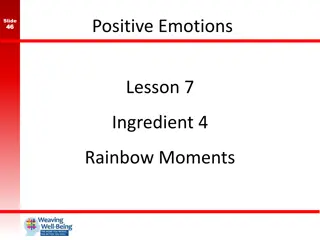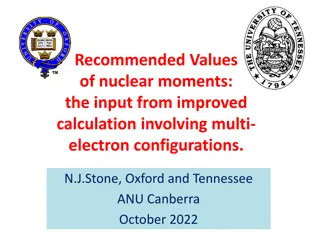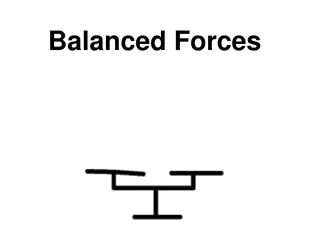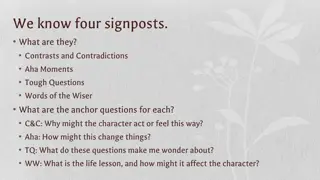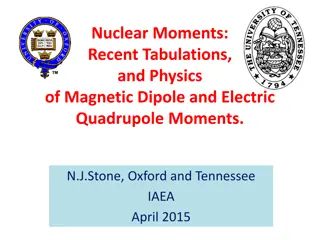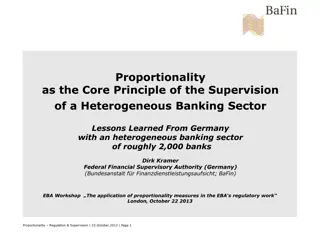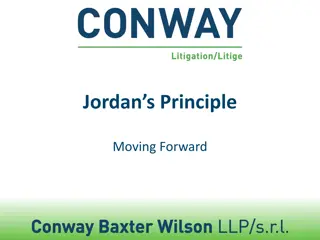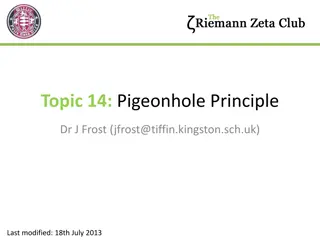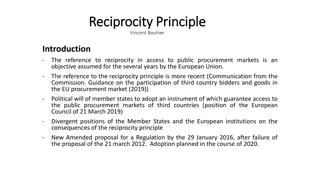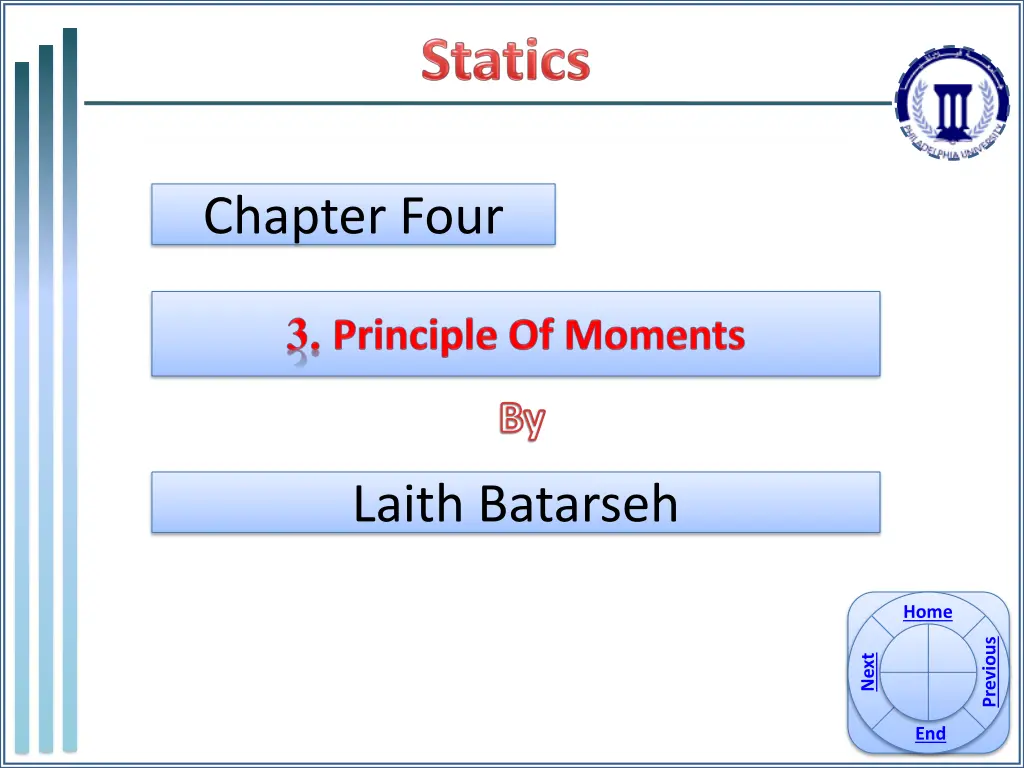
Understanding the Principle of Moments in Physics
Learn about the Principle of Moments, also known as Varignon's Theorem, which explains how the moment of a force about a point is calculated. Explore examples and calculations in two and three dimensions to understand this fundamental concept in physics.
Uploaded on | 1 Views
Download Presentation

Please find below an Image/Link to download the presentation.
The content on the website is provided AS IS for your information and personal use only. It may not be sold, licensed, or shared on other websites without obtaining consent from the author. If you encounter any issues during the download, it is possible that the publisher has removed the file from their server.
You are allowed to download the files provided on this website for personal or commercial use, subject to the condition that they are used lawfully. All files are the property of their respective owners.
The content on the website is provided AS IS for your information and personal use only. It may not be sold, licensed, or shared on other websites without obtaining consent from the author.
E N D
Presentation Transcript
Chapter Four By Laith Batarseh Home Previous Next End
Principle Of Moments In this lecture Learn the principle moment Home Previous Next End
Principle Of Moments Principle of Moments some times called Vrigonon s theorem (Vrigonon is French mathematician 1654-1722). State that the moment of a force about a point equals the summation of the moments created by the force components In two dimensional problems: the magnitude is found as M = F.d and the direction is found by the right hand rule In three dimensional problems: the moment vector is found by M =rxf and the direction is determined by the vector notation (ie. i,j and k directions) Home Previous Next End
Principle Of Moments Example [1] Find the moment caused by the following forces about point O Home Previous Next End
Principle Of Moments Example [1] + Mo,1 = 100 sin(30) (10) = 500 N.m + Mo,2 =- 100 cos(30) (5) =- 433N.m M = Mo,1+Mo,2=500-433=67N CCW Home Previous Next End
Principle Of Moments Example [2] The following is a gate. In which direction this gate will rotate? 100N 40o 1.2 m 60o 0.3 m 120N Home Previous Next End
Principle Of Moments Example [2] 1. Force analysis 100 cos(40) 120 sin(60) 1.2 m 100 sin(40) 120 cos(60) 0.3 m 2. Moment calculations + M = (100 cos(40))(1.5) ( 120 cos(60))(1.2) =43 N.m CCW Home Previous Next End
Principle Of Moments Example [3] Find the moment caused by the following forces about point O Home Previous Next End
Principle Of Moments Example [2] i j k 6 = = = + Mo,1 r F 15 10 30 75 x i k r1= 15i + 10j +6k F1 = [5j]N 0 5 0 i j k = = = Mo,2 r F 15 10 6 30 75 r2= 15i + 10j -6k F2 = [-5j]N x i k 0 5 0 = M 60 i Home o Previous Next End
Principle Of Moments Summary In two dimensional problems: the magnitude is found as M = F.d and the direction is found by the right hand rule In three dimensional problems: the moment vector is found by M =rxf and the direction is determined by the vector notation Home Previous Next End
Principle Of Moments End of lecture End of lecture See you in the next lecture See you in the next lecture Don t forget to answer Don t forget to answer the quiz the quiz Home Previous Next End




